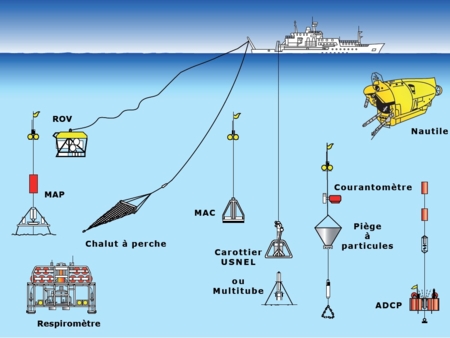Physiological and genomic approaches of a thermo-piezophile archeon involved in the sulfur cycle
Following the recent discovery of the world’s deepest hydrothermal vents at the Cayman Trough, hydrothermal samples were taken for culturing microorganisms of this site still poorly documented. Enrichment cultures were performed using these samples to isolate new microbial taxa having key metabolisms of biogeochemical cycles of carbon and sulfur or a particular physiology (piezophily). Among the isolates, there was a new hyperthermophilic and anaerobic sulfur-reducing archaea, designated as CDGST, originating from the hydrothermal field Beebe, at 4964 m depth. This strain belonged to the Thermococcus genus. It exhibited some physiological plasticity and was distinguishable from its closest relatives from the point of view of its physiology. It has been characterized in great details at metabolic, physiological and genomics levels. This strain is piezophilic and has the broadest range pressure for growth ever described for an organism. It grows optimally at 75°C, pH 6.0 and under a hydrostatic pressure of 50 MPa, the in situ pressure of its natural habitat. It belongs to a new species that was called Thermococcus piezophilus sp. nov. Its genome has been sequenced and annotated.The growth of this new isolate is effective from atmospheric pressure to at least 120 MPa, and the strain grows with more difficulties up to 130 MPa. No other organism, whether psychrophilic, mesophilic or hyperthermophilic has such a range of growth pressure. For this reason, the adaptation mechanisms to pressure of the strain were studied by a transcriptomic approach. This strain adapts to pressure variations, by modulating notably its energy production and energy conversion (carriers, hydrogenases, etc.) depending on the pressure.







